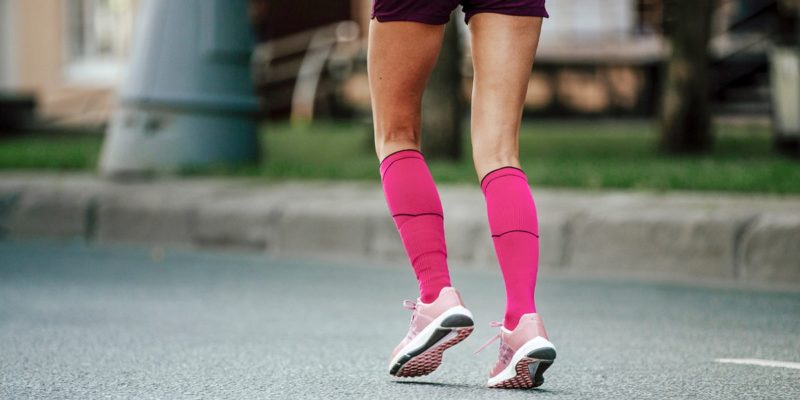Medical compression therapy involves applying a type of elastic product, mainly to the limbs, to exert controlled pressure on them. By compressing the limbs or other parts of the body, the medical compression garments for lymphedema operate by decreasing the diameter of the veins, thus improving the overall circulation and contributing to the return of blood flow to the heart.
It helps to reduce swelling and edema formation in the edematous tissues, reducing capillary leakage in the tissue and contributing to the lymphatic drainage of interstitial fluid. Medical compression provides significant relief for pain, bloating and heaviness, and other venous and lymphatic symptoms.
What level of compression should I use?
The most beneficial compression stockings are graded rather than uniform when it comes to strength. Graduated compression stockings are tighter at the ankle than at the waist. Compression socks with relatively low compression levels can be purchased over-the-counter from pharmacies, medical supply stores and online. These over-the-counter items are generally available at compression levels of around 15 to 20 mmHg. Socks with higher compression levels are prescribed by doctors. The recipe will include the specific level of compression you need.
By law, it is not necessary to present a prescription, but most surgical houses and pharmacies will not distribute products with high levels of Compression garments for lymphedema without a prescription. By “high level of compression”, we mean those that generally range from 20–30 mmHg to 30–40 mmHg. While these compression levels are generally safe to use, some individuals may be at risk of injury due to contraindications, so medical supervision is always recommended.
Compression levels explained
There are levels of compression at even higher ranges, but only your doctor should tell you about this. A trained and certified healthcare professional will need to take measurements to ensure you get the correct compression level and size. If your doctor or physiotherapist cannot make the adjustment, they should refer you to a professional who can. The severity of a given problem will help determine the level needed.
8-15 mmHg –
- Legs slightly sore and tired
- Support and comfort for standing or sitting for long periods
- When just a little support is needed for overall health and energy
15-20 mmHg –
- A little more support, providing daily relief for aching, heavy and slightly swollen legs
- Extra support on busy, active days or while traveling
- An aid to improve circulation, especially in the legs
- During pregnancy, they can help prevent varicose veins
20-30 mmHg –
- The level of compression most commonly prescribed by doctors
- It can be used to help a variety of medical conditions, from minor to moderate
- Used to help chronically painful and very tired legs
- Useful in the treatment of varicose veins
- Relief of swelling associated with mild edema
30–40 mmHg –
- Relief of moderate and severe edema and lymphedema
- Used in the treatment of deep vein thrombosis
- May help heal active venous stasis ulcers
- Used after bone fractures and orthopedic surgery
40–50 mmHg –
- Used as part of treatment for chronic venous insufficiency
- Used in the most severe cases of post-thrombotic syndrome
- Used to treat severe skin changes with active ulceration
Difference between compression tights and support tights
The term “supporting pantyhose” is widely known and often used for medical compression products. However, the principles of the two types of pantyhose are different. Support tights exert passive resistance to swelling, while compression tights apply active pressure to the leg veins. It prevents them from expanding and facilitates venous return. However, medical compression garments are produced to strict technical and medical specifications to ensure proper ankle pressure and graduated compression.
Conclusion
Always buy Compression garments for lymphedema from a reputed store. Ask your doctor. Compression garment and stockings are often used to alleviate a minor problem before it becomes a major problem. Shoe size is usually an indicator of compression stocking size, as well as ankle and calf measurements. Take measurements when you wake up in the morning, when swelling is minimal.
The medical compression garments can be applied at different degrees with pressure, forms, colors and materials based on symptoms and individual needs. Circular and plain knitted garments (pantyhose, leggings, shorts, tights, 3/4 socks, sleeves, gloves, etc.), wraps and bandages are available.













Comments